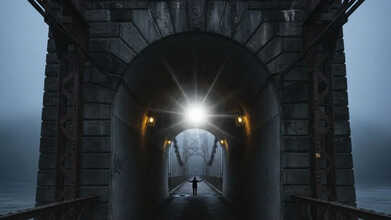- Health Conditions A-Z
- Health & Wellness
- Nutrition
- Fitness
- Health News
- Ayurveda
- Videos
- Medicine A-Z
- Parenting
What Is DSD? Rare Biological Condition Behind Imane Khelif’s Olympic Boxing Controversy Explained

What Is DSD? Rare Biological Condition Behind Imane Khelif’s Olympic Boxing Controversy Explained
Algerian Olympic boxer Imane Khelif, who won the gold medal in the women's 66kg boxing category at the 2024 Paris Olympics, has found herself in the middle of a gender-related debate. Reports accessed by French journalist Djaffar Ait Aoudia, as published in Reduxx, brought to light medical findings about Khelif's biological status, revealing that Khelif has "testicles" and an XY chromosome arrangement, thus confirming as 'biologically male'.
According to this report, Khelif has a medical condition known as 5-alpha reductase deficiency (5-ARD), a rare difference in sex development (DSD). Medical documents, allegedly from collaborations between France’s Kremlin-Bicêtre Hospital and Algeria’s Mohamed Lamine Debaghine Hospital, were reportedly compiled in June 2023. These reports outline that Khelif has internal testes and other characteristics atypical for female development.
An MRI and chromosomal tests confirmed the absence of a uterus and the presence of internal male reproductive organs. Furthermore, her testosterone levels were consistent with typical male ranges.
What are DSD?
DSD comprise the group of congenital conditions characterized by lack of typical sex development. In most cases, DSD can be identified in prenatal development due to interactions between complex genetic factors and hormone signals. Sometimes, people use the older term and refer to DSD as "intersex," while at other times they use some precise vocabulary to describe a given condition.
But first, what is 'Sex' and 'Gender'?
The terms "sex" and "gender" tend to be used almost interchangeably; however, they refer to two different things. "Sex" generally relates to the physical qualities determined by genetics and hormone influence, whereas "gender" refers to a human being's identity and social construction. DSD conditions can usually obscure the distinctions that are typical for sex, making talk around these terms particularly tricky.
DSD: Shattering genetic factors, Sex hormones and Genitalia
Genetic Factors
The genetic factors form the core of DSD conditions. Normally, a human being has 46 chromosomes, two of which decide the sex of the individual-the X and Y chromosomes. In most females, two X chromosomes are found, but in most males, an X and a Y chromosome are found. DSD can cause variations in such chromosomal patterns and hence sometimes lead to incongruity between chromosomal sex and physical attributes.
Sex Hormones
Sex hormones, including androgens in males and estrogens in females, determine body development both in fetal life and at puberty. Such hormones are produced in gonads, which could be either testes in a male or ovaries in a female, as prescribed by the genetic pattern. Hormonal pathways may therefore get affected in DSD such that sexual characteristics might appear in an atypical fashion.
Body Parts of Reproduction
DSD may result in the combination of male and female reproductive structures or in reproductive parts not typical male or female. A few have mixed genitals, but others may have typical genitals yet possess an unusual chromosomal setup that reveals itself at puberty or even later.
DSDs are as diverse as are the individuals affected by them. For example, some can be mentioned to be the following:
- In this case, one finds an individual with an XY chromosome yet having female-like external genitals.
- In other words, one has XX chromosomes but with male-like genitals.
- One can still have both ovarian and testicular tissues, meaning in such a case, you are likely to have genitals which might be a mix of a male and female.
- Some individuals have normal sex organs but an atypical arrangement of chromosomes, meaning changes in physical development over time.
The Cleveland Clinic notes that "intersex" has been the term used for decades in describing DSDs; however, terminology may vary among individuals and cultures. Some people with DSD prefer terms like 'differences' instead of 'disorders', arguing that DSD is just a variation in biological development.
According to a report in The Independent, "If I showed you pictures of my patients without any clothes on, you would say, well, these are females that I'm looking at," said Prof Højbjerg Gravholt, professor of genetic endocrinology in Denmark and works with patients who have differences in sex development.
He mentions that physical characteristics, hormonal profiles, or chromosomes cannot determine a person's sex uniquely. DSD in the lives of many presents the message that sex is not a biological category but rather a spectrum molded by genetic and hormonal diversity.
What Causes Disorders of Sex Development?
DSDs are caused by variations in genes that control sexual development or altered response to hormones such as those found in CAH. CAH presents as a result of excess androgen production with the development of male characteristics. Another type of DSD is the AIS where the body system is unable to respond to the presence of androgens thereby modifying physical development.
Is there a Treatment for DSD?
According to Cleveland Clinic, treatment of DSD is given based on the severity of the symptoms. These can vary from:
-Hormonal therapy for puberty and other conditions that may arise in connection with DSD, including osteoporosis.
-Genital reconstruction or modification surgery. Most of the surgeries are irreversible and thus left until the patient is capable of giving consent. For the very mild cases of DSD, no treatment is necessary and the individual may lead an untreated life.
Is It Possible to Prevent DSD?
Currently, DSDs can't be prevented. What is not well understood at present is the complex gene interactions that drive the development of human sex. No method has been developed that can predict or avoid DSDs in future offspring. That unpredictability reflects the normal variation in human biology.
Are Big Meals Putting Extra Strain On Your Heart? Here’s How To Avoid It

Credits: Canva
We all indulge in tasty meals from time to time and with the holiday season approaching, many of us will be enjoying larger-than-usual meals. But going overboard can raise the risk of certain health problems, including heart attacks, especially for those with chronic health conditions.
“If you’re young and healthy, a single large meal is unlikely to trigger a heart attack, but for the right population, it can certainly increase the risk,” said Ameya Kulkarni, a cardiologist at Kaiser Permanente, as per The Washington Post.
Heart disease is the top cause of death in the United States, with someone experiencing a heart attack roughly every 40 seconds. That adds up to over 800,000 people annually, according to the CDC.
Heavy Meals Can Trigger Heart Risk
In 2000, a study abstract presented at an American Heart Association conference revealed that an “unusually heavy meal” may increase the risk of a heart attack by about four times in the two hours after eating, which the authors called the “hazard period” - particularly in those with pre-existing heart disease.
The participants described their meals as “heavy.” The abstract wasn’t published in a peer-reviewed journal.
Similarly, a 2005 analysis of 17 studies found that heavy physical activity, eating, and emotional stress were some of the common triggers reported before a heart attack. Men were more likely to report exertion and eating, while women often reported emotional stress.
Big Meals Stress The Heart
Eating a large, high-fat, high-calorie meal is similar to extreme physical exertion for your heart. To digest all that food, blood is redirected to your digestive system. Blood vessels tighten, heart rate and blood pressure rise, and blood flow to the heart can be limited, said Steve Kopecky, a cardiologist and professor at Mayo Clinic.
That spike in blood pressure can rupture cholesterol plaques in the arteries, forming clots. Even the fatty meal itself — think buttered potatoes, gravy, and heavily marbled meats — can make your blood more prone to clotting.
“These factors together can lead to a heart attack a few hours later,” Kopecky explained.
Who Is Most At Risk?
Certain conditions raise heart attack risk, including diabetes, high cholesterol, high blood pressure, and obesity, as well as lifestyle habits like poor diet, inactivity, or smoking history. For people with these risk factors, a large meal could act as a trigger, just like emotional stress or heavy physical activity, such as shoveling snow, said Kulkarni, also president of the AHA’s Greater Washington Region Board of Directors.
Heart Attack Warning Signs
- Chest pain or pressure in the center or left side of the chest that persists for several minutes or comes back.
- Pain or discomfort in one or both arms, jaw, neck, back, or above the stomach.
- Shortness of breath without physical activity.
- Weakness, dizziness, lightheadedness, or sudden cold sweats.
- Nausea or vomiting.
- Fast or irregular heartbeat.
Tips For Safer Indulgence
- Enjoy indulgent foods, but balance your plate with healthy options. Aim for half your plate to be fruits and vegetables, a quarter protein, and a quarter starch, Kulkarni said. Start with a salad, then add whole foods like turkey with a modest portion of stuffing, beans, or sweet potatoes.
- Eat slowly. It can take up to 20 minutes for your brain to register fullness, so eating quickly can lead to overeating. Treat meals as a social event and savor the time with family and friends.
- Limit alcohol. Drinking can increase appetite and reduce self-control, leading to eating more.
- Stop when you feel full. Skip that second helping once you’ve had enough.
- Take a walk after meals. Walking can help reduce triglycerides, regulate blood pressure, and lower blood sugar, Kopecky said.
Large meals high in saturated fats, calories, and processed carbs can increase heart attack risk for people with underlying health conditions. But with moderation, adding healthy foods to your plate, and skipping extra servings, you can enjoy your meals while lowering your risk.
Bird Flu Variant Can Now Withstand Fever, Sparking Stronger Human Threats

Credits: Canva
Bird flu viruses pose a particular danger to people because they can continue multiplying even at temperatures that would normally stop most infections. Fever is one of the body’s natural ways to slow viruses, yet new research from the universities of Cambridge and Glasgow shows that avian strains can survive what should be a hostile environment.
The study, published in Science, identifies a key gene that influences how well a virus copes with heat. This same gene moved into human flu strains during the 1957 and 1968 pandemics, allowing those viruses to spread more easily.
How Flu Viruses Thrive In The Body
Human influenza viruses infect millions each year. The seasonal strains we see most often fall under influenza A and tend to do well in the cooler temperatures of the upper respiratory tract, which is close to 33°C. They are less suited to the warmer, deeper parts of the lungs, where temperatures reach about 37°C.
As per Science Daily, when the body cannot slow an infection, the virus continues to multiply and spread, which can lead to more serious illness. Fever acts as a protective response, pushing body temperature as high as 41°C. Until now, the exact reason why fever slows some viruses but not others has been unclear.
Avian influenza behaves differently. These viruses usually grow in the lower respiratory tract, and in their natural hosts, such as ducks or seagulls, they often infect the gut. Temperatures in these areas can reach 40°C to 42°C, which helps explain their greater tolerance to heat.
How Fever Limits Infection and Why Bird Flu Can Resist It
If left unchecked, a virus can move through the body and cause significant harm. Fever is one of the body’s most familiar defence responses and can raise the core temperature to levels that inhibit many pathogens. Scientists have long known that some viruses withstand these temperatures, but the reason behind this resistance has remained uncertain.
Avian flu strains show a clear advantage in hotter environments. They thrive in the lower airways and, in birds, survive in the high heat of the gut. These features distinguish them from human influenza strains, which prefer cooler tissue.
Earlier studies in cell cultures hinted that avian flu copes better with fever-range temperatures than human strains. The new research offers direct evidence from animal experiments, helping explain why fever is effective against some types of influenza but far less useful against others.
Experiments Show Why Fever Slows Human Flu but Not Avian Flu
Researchers from Cambridge and Glasgow recreated fever-like conditions in mice to examine how different viruses responded. They worked with a lab-adapted human influenza strain known as PR8, which does not pose a threat to people.
Mice do not typically develop a fever from influenza A, so the scientists raised the temperature of the environment to lift the animals’ body temperature.
The findings were striking. When body temperature rose to fever levels, the human-origin virus struggled to replicate, and the infection weakened. Avian influenza behaved very differently. Raising the temperature did not stop the virus from multiplying, and a small increase of only 2°C was enough to turn a normally severe human-origin infection into a mild one.
The PB1 Gene Helps Bird Flu Withstand Fever
The study also identified the PB1 gene as a major reason why bird flu can tolerate heat. PB1 helps the virus copy its genetic material inside infected cells. When viruses carried an avian-type PB1 gene, they were able to endure high temperatures and still cause severe disease in mice. This matters because avian and human flu viruses can exchange genes when they infect the same host, such as pigs.
Dr. Matt Turnbull, the study’s first author from the Medical Research Council Centre for Virus Research at the University of Glasgow, explained that this gene swapping remains a major concern for emerging influenza strains. He noted that similar exchanges occurred in 1957 and 1968, when human flu viruses replaced their PB1 gene with one from an avian strain. According to the researchers, this may help explain why those pandemics were so severe.
Why Do People See A Tunnel Of Light During Near-Death Experiences?

Credits: Gemini
In moments where life seems to slip away, many people describe seeing a bright tunnel with a strong light shining at the end. The image feels almost otherworldly. Whether it happens during major surgeries, car crashes, or sudden accidents, people from different places and backgrounds share accounts that sound strikingly alike. Films, novels, and personal stories often mention this same vision during a near-death experience. While some link it to a glimpse of the afterlife, there may be a scientific explanation for why the mind creates this scene.
Is it a sign of something beyond the physical world, a reaction of the mind in distress, or part of how the brain behaves as it shuts down? Here is what researchers have learnt.
Do You Really See A Tunnel Of Light When You Die?
Yes. Scientists agree that many people do report seeing a tunnel of light when death is close. Even though death is certain, much about it still feels unclear. For generations, people have tried to understand what takes place in those last moments. Only in recent years, as medical care has advanced, have researchers been able to look more closely at near-death experiences, also known as NDEs, which occur when someone comes dangerously close to dying.
One of the most repeated features of NDEs is the bright tunnel, a sight described by millions. It is not a quick trick of the mind. People often speak of it as deeply emotional and unforgettable. This leads to difficult questions. Does this vision suggest something beyond physical life, or is the brain responding to extreme stress in its final effort to survive?
Why Do You See A Tunnel Of Light During Near-Death Experiences?
When someone nears death, the body begins to change very quickly. Vital functions start to drop. The heart may slow, reducing the amount of oxygen that reaches the brain. Body temperature can fall, and breathing may become weak or uneven. Along with these physical changes, the brain also reacts in its own way.
Also Read: How Post Malone Lost 55lbs Just By Cutting Soda And Ditching Junk
Tunnel Of Light During Death Experiences: What Scientists Found
A team at the University of Michigan studied what happens in the brain as a person dies. They examined four people who were removed from life support and found that two of them showed a strong surge of brain activity right before death.
The pattern of activity was similar to what occurs when a person is awake and using higher thought. These bursts were produced by gamma waves, which are linked to conscious processing. In one patient, the rise in gamma activity was nearly three hundred times higher than normal.
Jimo Borjigin of the University of Michigan suggested that this might show a form of hidden awareness that becomes active just before death.
Professor Borjigin explained that some people near death may recall seeing or hearing things or may feel as though they are watching their body from above, or even moving through space. She said her team may have identified the basic brain steps connected to this type of hidden consciousness.
She added that future research needs to involve people who survive such events, so their brain activity can be compared with their own descriptions of what they experienced.
Another study in the Journal of the Missouri State Medical Association also explores how consciousness may shape near-death experiences. The researchers note that there is still much to learn about how the brain creates awareness and how that awareness influences what people see or feel as they approach death.
© 2024 Bennett, Coleman & Company Limited

